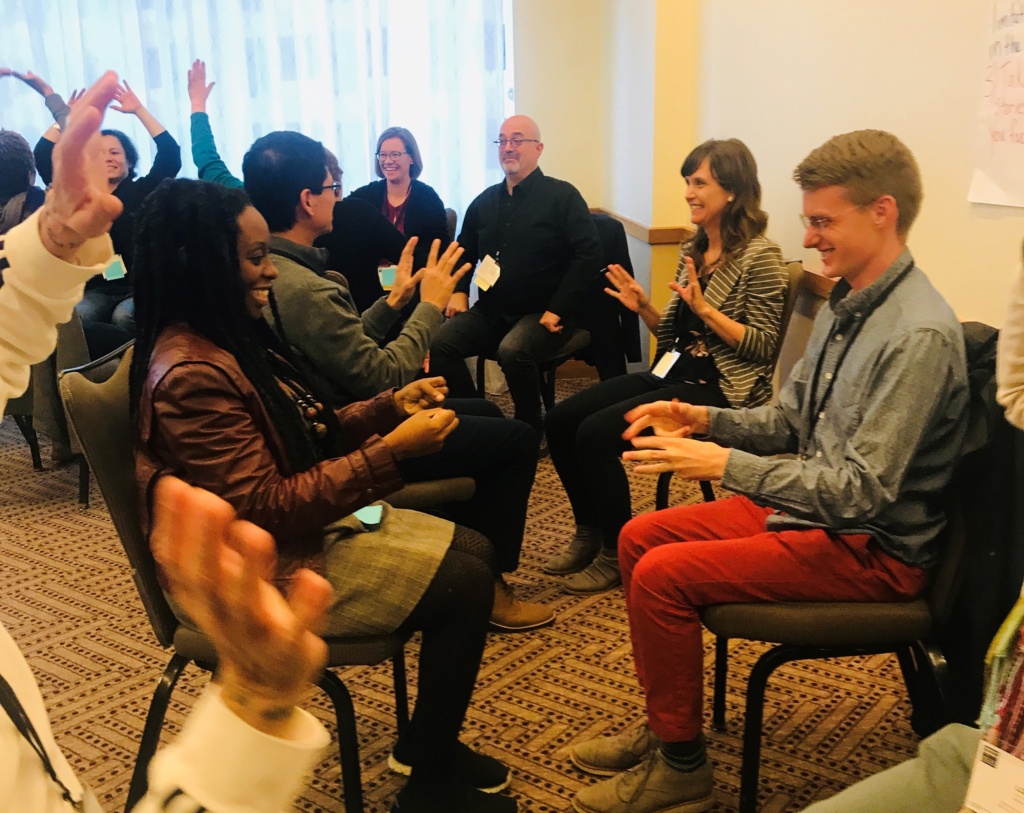Facing Age: Reflection on Facing Difficult Dialogues

Do not go gentle into that good night,
Old age should burn and rave at close of day;
Rage, rage against the dying of the light.
— Dylan Thomas
This past November the National Guild invited Lifetime Arts to facilitate a mini-institute called, “Age Equity: Combating Ageism to Fuel Creative Aging Programs, Funding, and Partnerships.”
I always begin our creative aging training with an exploration into ageism. The Merriam Webster dictionary’s definition of ageism is, “prejudice or discrimination against a particular age-group and especially the elderly.” What this definition doesn’t say, is that this discrimination is often self-inflicted because of enculturated ideas about what it means to grow older in this country.
You would think because I encourage my students to dive deeply into their own embedded ageism, that I must not fall prey to society’s negative messaging about aging. However, during this mini-institute, I came face to face with this question, “Should I, as the facilitator of difficult dialogue about ageism, share my own struggles with aging?”
I believe wholeheartedly that people of all ages are entitled to arts education. Gratefully, through my work, I am an advocate for older adults as creative learners. I promote their inclusion at the table of social equity, and propagate access to barrier-free arts learning. However, every time I engage in ageism dialogue, I am struck by my own hypocrisy.
Unfortunately, the cultural narratives about aging impact how I perceive myself and my place in the world. I am a 48 year old woman, an actress and theatre maker, arts educator, wife, and mother of three children. My own aging process is fraught with distress, even as I encourage other people to embrace their aging and reimagine what it means to grow older.
My inner ageist often says things like this to me, “I can’t audition for that part — no one sees me as young and beautiful anymore; I can’t submit my play to that festival — I am not relevant; my poems can’t be shared because no one wants to hear my middle-aged point of view; I am too old to be considered an emerging artist; I missed my chance, I am too old.”
These false narratives also ring loudly in the hearts of many of the older adult students I have taught over the years. They can’t believe that their life story is worth sharing, that they can possibly stand up and perform their original monologue, or express themselves through movement and dance. They are sure they are too old to even try. But then, we work together to shut out those lies and to move beyond them.
I am so lucky to witness their transformation — from people who were invisible into artists who are heard, seen, and celebrated. They soar as they embrace their ability to learn, to grow and express themselves in all their uniqueness and glory. So, why do I still allow ageist conspiracies to dictate what I should or shouldn’t be?
However slowly, I’m learning that my own transformation lies in being able to wrestle through the muck in company and dialogue with my students. My hope is that the more honest and vulnerable I am, the more my students will feel safe to articulate their own struggles. As I get better at not placing limits on myself because of my age, and stop beating myself up for not having “age appropriate” dreams — the more I can authentically encourage other people to do the same. We are all aging and none of us should embrace “the dying of the light.” Rather, let’s dance within in, and see how high we can fly!
This article was originally published in the National Guild for Community Arts Education’s Guild Notes, Arts and Anti-Racism, Issue 1, 2020.
See also, “Lifetime Arts Featured in Inaugural Creative Aging Track at National Guild Conference“

